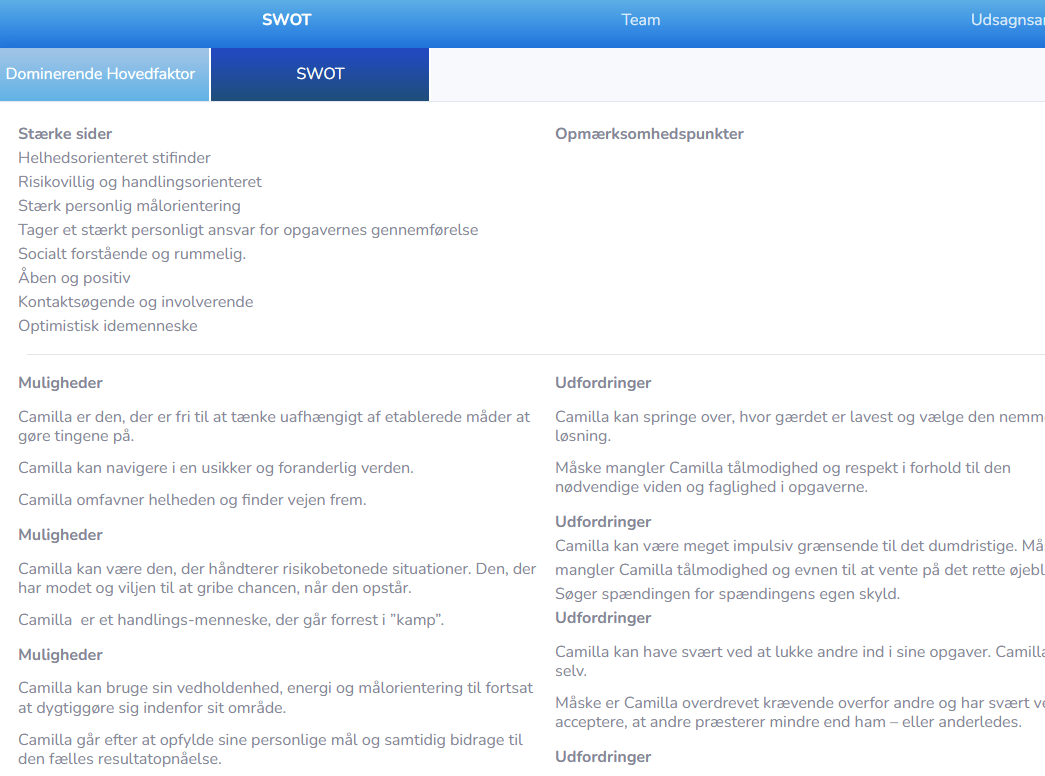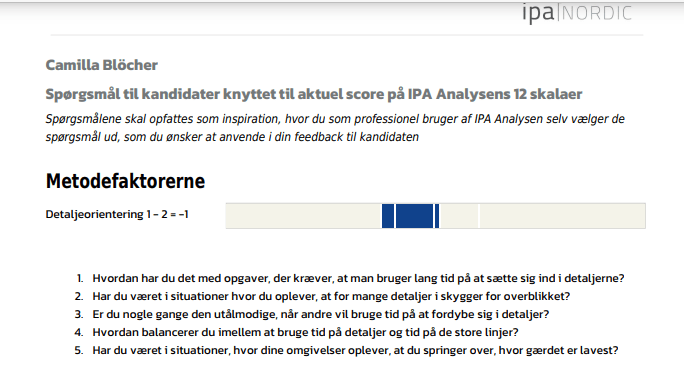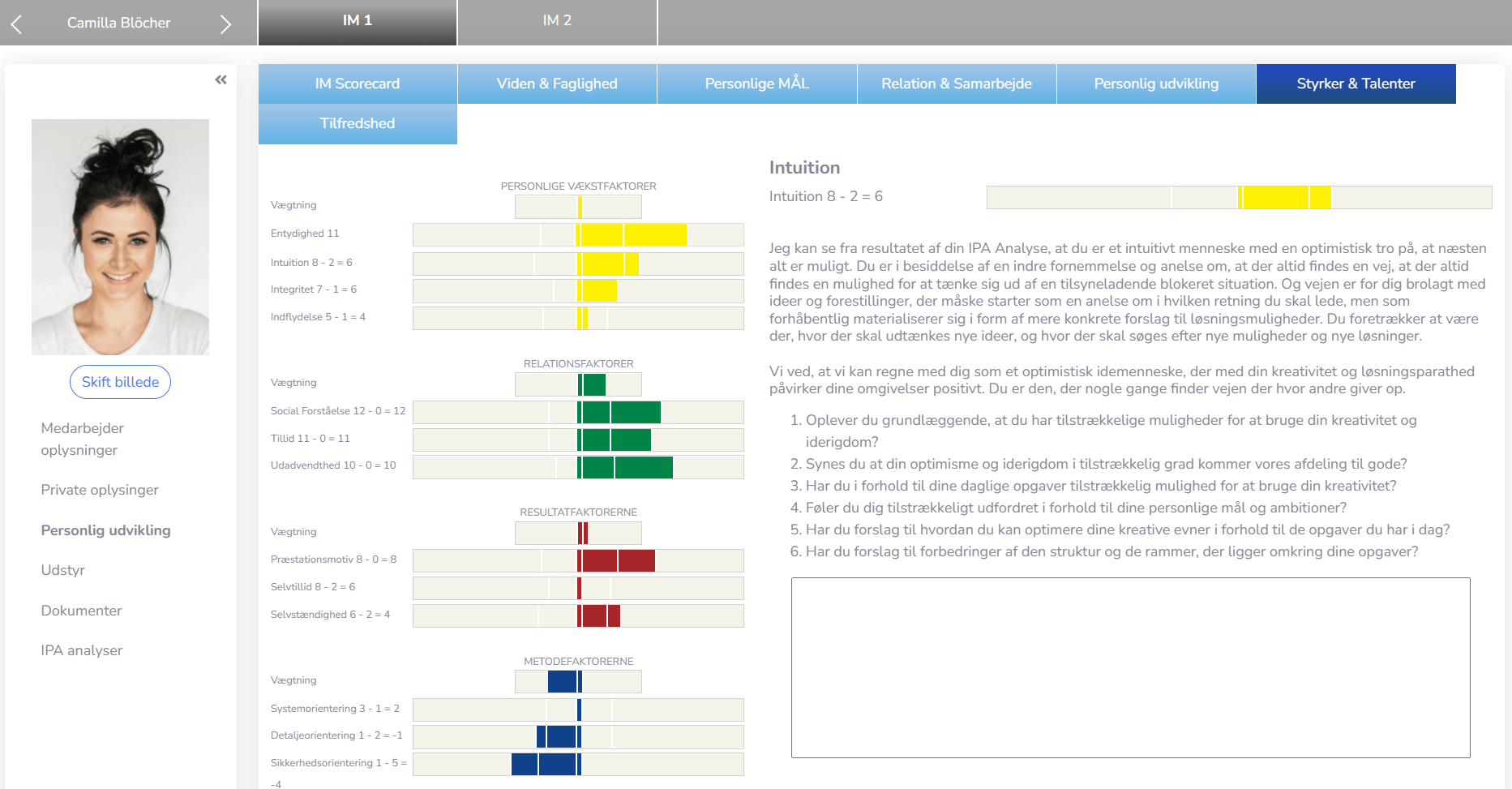IPA Competency Development
IPA Competency Development brings together the activities that enable the individual to solve their tasks better. It is everything from peer education to MBA programs.
At IPA, we gather that knowledge, make it transparent at great value for the company and not least the individual employee.
Mastery – (know what)
Autonomous- (know how)
Belonging – (know who)
Meaning- (know why)
What?
How?
Who?
Why?
Mastering – knowledge
(know what):
What do we know a little or a lot about? Knowledge can be tacit or explicit and is often acquired in courses, through reading books and manuals.
Or by people telling us something.
It is knowledge, professionalism, tasks and a focus on value-adding workflows.
Autonomy
(know how):
Autonomy (know how):
What are we able to accomplish with what we know? What strengths do we possess? What goals do we set for achieving the results we want? How are the challenges we face along the way handled? The knowledge can be trained outside of the situation, but is often learned in practice through testing or imitation.
Belonging
(know who):
Who are we in the world and how do we want to see ourselves?
How do we interact with others in collaborative tasks – customers, suppliers and partners? What about colleagues and what is good wellbeing for the individual? Where is the motivation to do something meaningful or meaningless?
Meaning
(know why):
Meaning (know why):
What do we want to accomplish with what we know and are capable of? What makes sense to us and makes us who we are or want to be? Meaning, commitment, learning and development are for example influenced through dialogue and reflection on practice. It can be informal in everyday life or in a formalized dialogue such as employee development dialogue.
The three types of competencies
Competencies are thus the individual’s knowledge, skills and experiences translated into concrete action – it is what we do. When talking about competencies, a distinction is typically made between professional, personal and organisational competencies.
Professional competencies
(also known as qualifications) are acquired through education, jobs, volunteering and leisure activities. These are the easiest to read. Do you have a welding certificate yes/no?
Personal competencies
are determined by our basic human characteristics, attitudes, self-awareness and experiences. They influence how we approach and perform work tasks and how we interact with others.
Organizational competencies
are linked to the specific workplace and are not always transferable to other workplaces or jobs. They can be procedures, work processes, rules, culturally embedded practices, etc.
Competency modules at IPA
IPA supports professional, personal and organizational competency
development.
We call our model IPA Data-driven HR.

Core Features
A core trait appears in the IPA analysis when a person has a clear and distinct behavior compared to the norm population (the average Dane). These core traits are thus unique personal competencies.
Examples of core traits
– Resilient
– Conflict resistant
– Influence-seeking
– Ambitious and ambitious
All core traits are unique to the person in the life situation the employee is in.
The Personal SWOT
IPA’s Person-Swot Analysis helps identify the areas where the employee is strong – or weak – as well as the opportunities and challenges they are likely to face in their current job and in their future working life.
Use it in recruitment or as inspiration and a basis for reflection in connection with dialogues such as Intelligent Appraisal Perfomance Interview, and the further journey through working life.


Built-in dialog tools
At the core of IPA is the highly rated personality analysis IPA Core. For competency development, questions are linked to candidates’ current score on the 12 scales of the IPA Analysis
The questions should be seen as inspiration, where you as a professional user of the IPA Analysis choose the questions you want to use in your feedback to the candidate
Example of HR and manager tools

Example of a dialog presentation based on the Intelligent SDD around strengths and talents.
Based on the employee’s individual personal profile, individual strengths and talents are identified and a series of questions emerge that can enrich and develop the dialog.
Data-driven HR with the employee at the center.